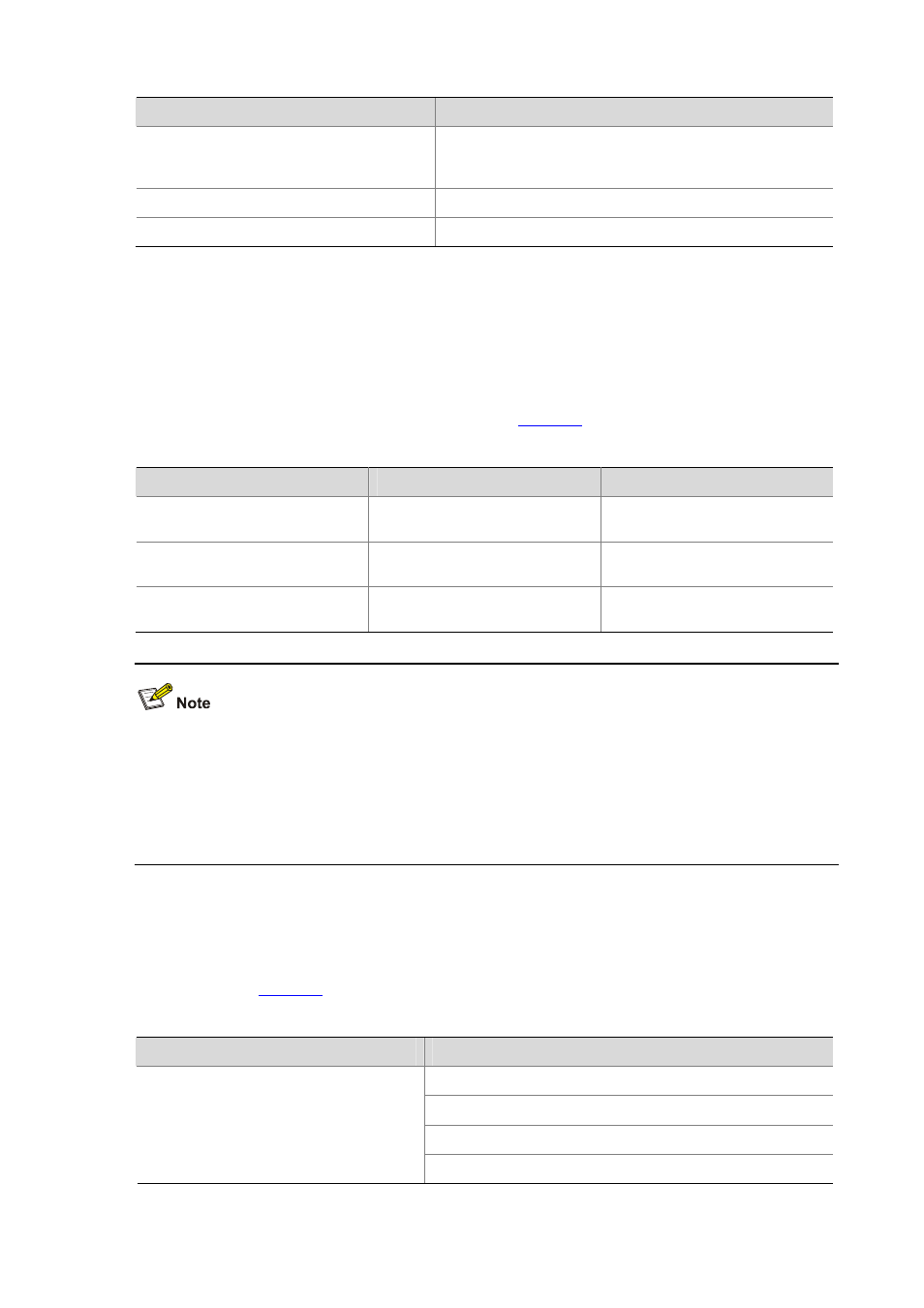Command history, Error prompts, 8 error prompts – H3C Technologies H3C WX3000 Series Unified Switches User Manual
Page 34

1-8
Press
To
Any character except the space, Enter, the
forward slash (/), plus sign (+), and minus sign
(-) when the display output pauses
Stop the display output.
The space key
Go to the next page.
Enter
Go to the next line.
Command History
The CLI provides the command history function. You can use the display history-command command
to view a specific number of latest executed commands and execute them again in a convenient way.
By default, the CLI can store up to 10 latest executed commands for each user. You can view the
command history by performing the operations listed in
Table 1-3
View history commands
Purpose
Operation
Remarks
Display the latest executed history
commands
Execute the display
history-command
command
This command displays the
command history.
Recall the previous history
command
Press the up arrow key or Ctrl+P
This operation recalls the previous
history command (if available).
Recall the next history command
Pressing the down arrow key or
Ctrl+N
This operation recalls the next
history command (if available).
z
Because the Windows 9x HyperTerminal explains the up and down arrow keys in a different way,
the two keys are invalid when you access history commands in a Windows 9x HyperTerminal
environment. However, you can use Ctrl+P and Ctrl+N instead to achieve the same purpose.
z
When you enter the same command multiple times consecutively, only one history command entry
is created by the command line interface.
Error Prompts
If a command passes the syntax check, it will be successfully executed; otherwise, an error message
will be displayed.
lists the common error messages.
Table 1-4
Common error messages
Error message
Description
The command does not exist.
The keyword does not exist.
The parameter type is wrong.
Unrecognized command
The parameter value is out of range.